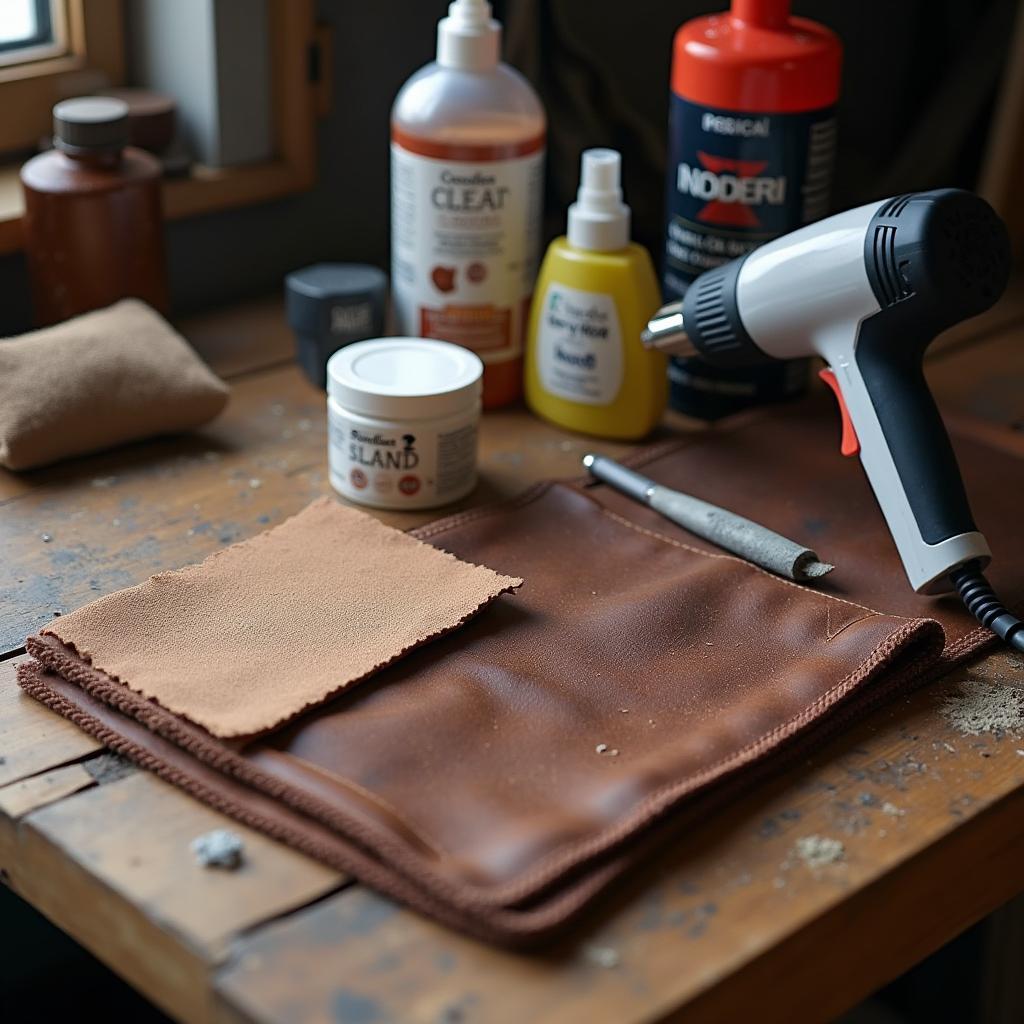Leather car seats can add a touch of luxury and class to any vehicle. However, leather is a natural material that can be prone to wear and tear, especially with regular use. Scratches, cracks, and fading can make your once-pristine leather seats look worn and aged. But don’t fret! Repairing leather car seats is often more achievable than you think, and it can save you from the cost of reupholstering or replacing the entire seat. This comprehensive guide will walk you through the different types of leather car seat damage, the repair techniques, and provide valuable tips for maintaining your seats to keep them looking their best for years to come.
Assessing the Damage: What’s the Problem?
Before diving into the repair process, it’s crucial to assess the type and severity of the damage your leather car seats have endured. This will help you determine the best course of action and the appropriate repair methods. Here are some common types of damage:
- Scratches: These are superficial damages that appear on the leather’s surface. They can be caused by sharp objects, pet claws, or even friction from clothing.
- Cracks: Unlike scratches, cracks penetrate deeper into the leather. They often occur due to age, dryness, and exposure to extreme temperatures.
- Tears: These are more severe forms of damage where the leather has ripped apart. Tears can result from accidents, sharp objects, or excessive force.
- Fading and Discoloration: Prolonged exposure to sunlight can cause the leather’s color to fade or become discolored over time.
- Stains: Spills from food, drinks, or ink can leave unsightly stains on your leather seats.
DIY Leather Car Seat Repair: Techniques and Tips
Now that you’ve identified the type of damage, let’s delve into the repair techniques:
1. Cleaning and Preparation: The Foundation
- Gather Your Supplies: You’ll need a leather cleaner, microfiber cloths, rubbing alcohol, a soft-bristled brush, and warm water.
- Clean the Affected Area: Using a leather cleaner and a microfiber cloth, gently clean the damaged area and its surroundings to remove dirt, grime, and debris.
- Degrease the Surface: Dampen a cloth with rubbing alcohol and wipe the damaged area to remove any remaining residue or oils.
2. Repairing Scratches and Scuffs
- For Minor Scratches: Apply a leather conditioner to the scratch and buff it gently with a microfiber cloth using circular motions.
- For Deeper Scratches: Use a leather filler that matches the color of your seats. Apply a thin layer of filler to the scratch using a palette knife, let it dry, and then buff it gently until it blends seamlessly.
3. Addressing Cracks and Tears
- For Small Cracks: A leather filler can be used to fill the crack. Apply it carefully, ensuring it fills the entire crack, and then let it dry completely.
- For Larger Cracks and Tears: You’ll need a leather repair patch. Clean the area thoroughly, apply leather adhesive to the back of the patch, and carefully align it over the tear. Apply pressure evenly for a few minutes to ensure a strong bond.
4. Restoring Color and Shine
- Leather Dye: If the damage is extensive or the color has faded significantly, consider using a leather dye that matches your seat color. Follow the manufacturer’s instructions carefully for best results.
- Leather Conditioner: After repairing and dyeing, apply a high-quality leather conditioner to the entire seat to moisturize the leather, prevent future cracking, and restore its natural shine.
Seeking Professional Help: When to Call the Experts
While many leather car seat repairs can be accomplished with DIY methods, certain situations call for professional intervention. These include:
- Extensive Damage: If the damage is extensive, involving large tears, deep cracks, or widespread discoloration, it’s best to consult a professional automotive upholsterer.
- Airbag Concerns: If the damage is near an airbag, attempting a DIY repair could interfere with its deployment. Always consult a professional in such cases.
- Lack of Confidence: If you’re unsure about tackling the repair yourself or don’t have the necessary tools and materials, seeking professional help is always a wise choice.
Maintaining Your Leather Car Seats: Prevention is Key
Maintaining your leather car seats is just as crucial as repairing them. Regular care can prevent premature wear and tear and keep your seats looking their best for longer.
- Regular Cleaning: Clean your seats regularly with a leather cleaner to remove dirt and grime that can accumulate over time.
- Conditioning is Crucial: Apply a leather conditioner every few months to keep the leather supple and prevent drying and cracking.
- Protection from the Elements: Park your car in the shade or use a sunshade to protect your leather seats from prolonged exposure to sunlight, which can cause fading and cracking.
By following these tips, you can preserve the beauty and integrity of your leather car seats for years to come.
FAQs
Q: Can I use household cleaners on my leather car seats?
A: No, household cleaners often contain harsh chemicals that can damage and dry out leather. Always use a cleaner specifically designed for leather upholstery.
Q: How often should I condition my leather car seats?
A: Ideally, condition your leather seats every three to four months. However, if your car is frequently exposed to extreme temperatures or sunlight, you might need to condition them more often.
Q: Can I dye my leather car seats a different color?
A: Yes, you can dye your leather car seats a different color using a leather dye kit. However, it’s important to choose a high-quality dye and follow the instructions carefully to achieve a uniform and long-lasting finish.
Q: How can I prevent my leather car seats from getting too hot in the summer?
A: Parking in the shade or using a sunshade can help. You can also use seat covers designed to reflect heat and keep your seats cool.
Q: My dog scratched my leather car seat. Can I fix it myself?
A: Can you repair dog scratches on car leather seats?
Q: I have a small slit in my leather car seat. What’s the best way to repair it?
A: How do you repair slits in leather car seat?
Need More Help?
We hope this guide has provided you with valuable insights on how to repair leather seats in a car. Remember, maintaining the pristine condition of your car’s interior not only enhances its aesthetics but also contributes to its overall value.
Do you have more questions or need further assistance? Don’t hesitate to contact our team of experts via WhatsApp at +1(641)206-8880 or email us at [email protected]. We’re available 24/7 to provide personalized guidance and support for all your car repair needs!



